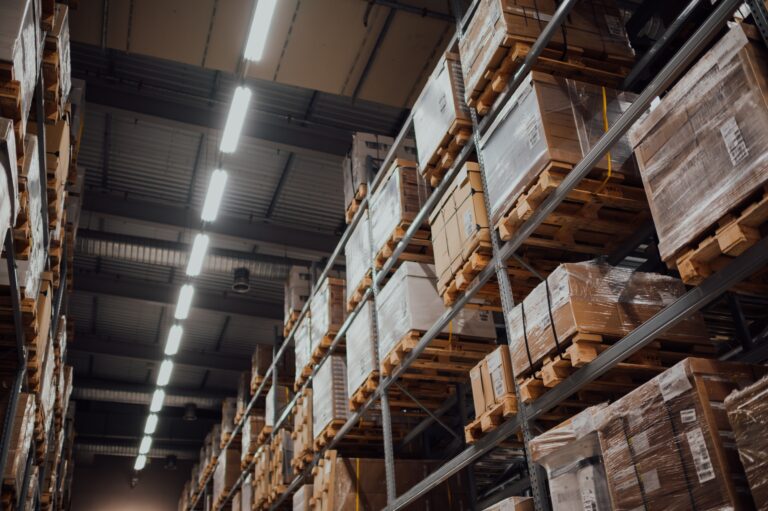By Dean Frew, CTO and Senior VP of RFID Solutions at SML RFID
Even before COVID-19 struck, the retail industry has long been a challenging landscape to navigate. Due to increasing competition, higher overheads, and tighter profit lines, the sector has always been pushed to innovate or risk becoming redundant. For example, with the growth of the internet, many retailers began focusing their efforts on establishing an online presence. This was previously seen as a “nice to have” but eventually became a “need to have”.
As more customers began shopping online, this led brick and mortar stores to innovate how they could drive traffic to their outlets using their online platforms. This resulted in retailers developing more robust omnichannel strategies by delivering BOPIS solutions.
The majority of innovations within retail have been fuelled by changing customer demands. Previously, consumers were more attentive to price and value when making their purchasing decisions, but they have shifted their focus towards convenience and order fulfilment time in recent years. As we move forward, more retailers have also started to be mindful of their sustainability values due to the increasing number of ethical shoppers.
In fact, according to research undertaken by Retraced, we are seeing a significant consumer commitment towards the impact of their purchasing. 63% of respondents said they care more about sustainability, and 69% said they are trying to buy less fast fashion.
As the world emerges from these challenging times, the retail sector will find itself permanently transformed as the pandemic accelerated the rate of change that was already underway in these areas.
The return of brick and mortar retail
The COVID-19 pandemic has forced retailers to pivot quickly to Buy Online Pick Up In Store (BOPIS) and omnichannel retail channels, to survive the past 12 months. Techniques have proven to be incredibly beneficial and could even potentially complement the traditional retail experience. As customers now have the opportunity to browse in physical shops, brick and mortar stores have looked to innovate how they can drive increased traffic back into their outlets, using these previously implemented online platforms.
Retail technology has experienced a revamp over the last 12 months. COVID has forced retailers to invest in online methods such as BOPIS and BORIS solutions to cater to the retail audience. The implementation of retail technology in physical stores is intrinsic to a fully functional retailer, providing both an increased customer experience and satisfaction as well as associated employee effectiveness.
The rise of RFID
The effect of RFID can be seen as the mediating role of retail performance, creating efficiency throughout the entire supply chain. RFID can improve the effectiveness and efficiency at each stage of the supply chain. One of the most impactful advantages of RFID implementation is the reduced time employees spend taking inventory and managing stock. An effective RFID solution increases inventory accuracy by up to 98%, a substantial improvement from manual stock counts, which can be as low as less than 70%.
Modern customers now demand a flawless and personalised shopping experience. RFID allows employee time to be spent focusing on providing that experience rather than manually checking inventory – a time consuming and often inaccurate task. This is pivotal to retailers. RFID technology can remove this challenge and create a smooth transition through the supply chain, ultimately increasing customer satisfaction and experience. The deployment of RFID technology in fashion – based on flow of stock, finished goods, stock level, and time-efficiency has a significant impact on both efficiency and operational effectiveness, directly affecting both employee productivity and customer experience.
The future of RFID technology post-pandemic
As we move into a new era of retailing, a significant challenge for retailers is managing their inventory. However, with the implementation of RFID technology, retailers can receive the necessary support they need to survive and create long-term sustainability. As a result, more retailers are turning to RFID technology to boost their retail inventory efficiency.
Item-level RFID inventory management solutions can give retailers an advantage over competitors by providing better insight into their product availability. What’s more, by implementing the technology shortly after restrictions have been lifted, retailers can now leverage the technology to capture immediate sales and create long-term relationships with customers.
As the world continues to work towards a “new normal”, it is more important than ever for retailers to consider what the post-crisis landscape will become and prepare for ongoing changing customer habits. Implementing technology that allows them to track their inventory accurately and efficiently across multiple platforms will provide increased profitability in the immediate to help emerge from the pandemic and the potential for increased market share in the future.
About the author

Dean Frew was appointed CTO and SVP RFID Solutions for the SML Group in 2015. Prior to this appointment, Mr. Frew was founder and President of Xterprise since 2002 which he sold to SML in 2013 and renamed SML Intelligent Inventory Solutions (SML IIS) in 2015. Prior to founding SML IIS, Mr. Frew served on executive teams for several supply chain software and RFID solution companies, including GlobeRanger and FPIX and Crospan. He spent 15 years with Texas Instruments, serving as general manager of advanced logistics and RFID-enhanced supply chain systems, and as director of technology programs, among others.
Dean Frew is a frequent speaker featured at many national and international supply chain, asset management and RFID technology events. He earned a bachelor’s of science degree in mechanical engineering from New Mexico State University, and a master’s of science degree in industrial systems from Virginia Tech. He also holds multiple patents in electronic packaging and RFID systems, plus pending patents for RFID and inventory and asset systems.
Related Articles

Hexnode CEO on how the “Holiday Illusion” is Masking the Risks of Retail’s Seasonal Workforce
The danger of seasonal hires is magnified not just by who is accessing the network, but when they are doing it. Sophisticated threat actors possess a deep understanding of the retail operational calendar.

The New Frugality: How Inflation and Tariffs Are Reshaping Consumer Spending
One of the most telling shifts is how shoppers approach decision-making. Where convenience once dominated, consciousness now plays a larger role. People are researching more before making a purchase, comparing prices across multiple platforms, and questioning whether they really need the product in the first place.

Embracing new concepts vs the return to brick-and-mortar
Balancing the return to physical retail and the development of new technologies to enhance customer experience and drive operational efficiency for long-term success.
Enartis to Acquire Parsec in Winemaking and Retail Deal
The deal will bring Enartis and Parsec together to help wineries manage every part of production more easily and efficiently, from grape to bottle.


 for the latest news and job opportunities in retail tech
for the latest news and job opportunities in retail tech 